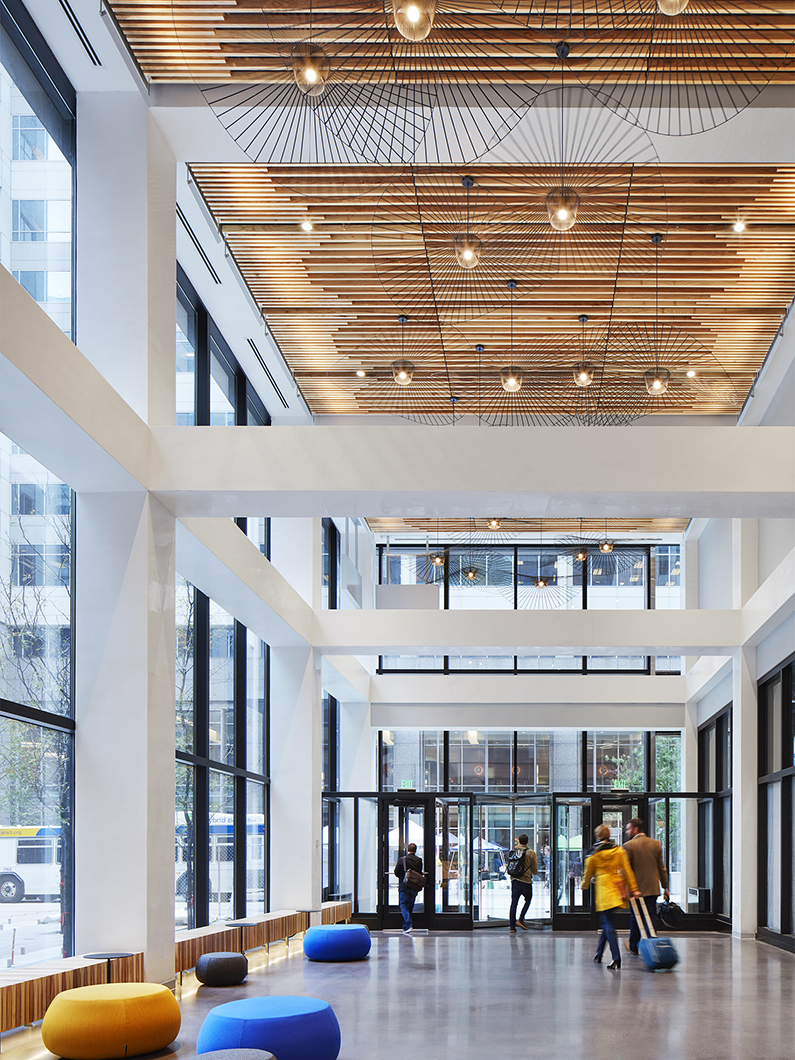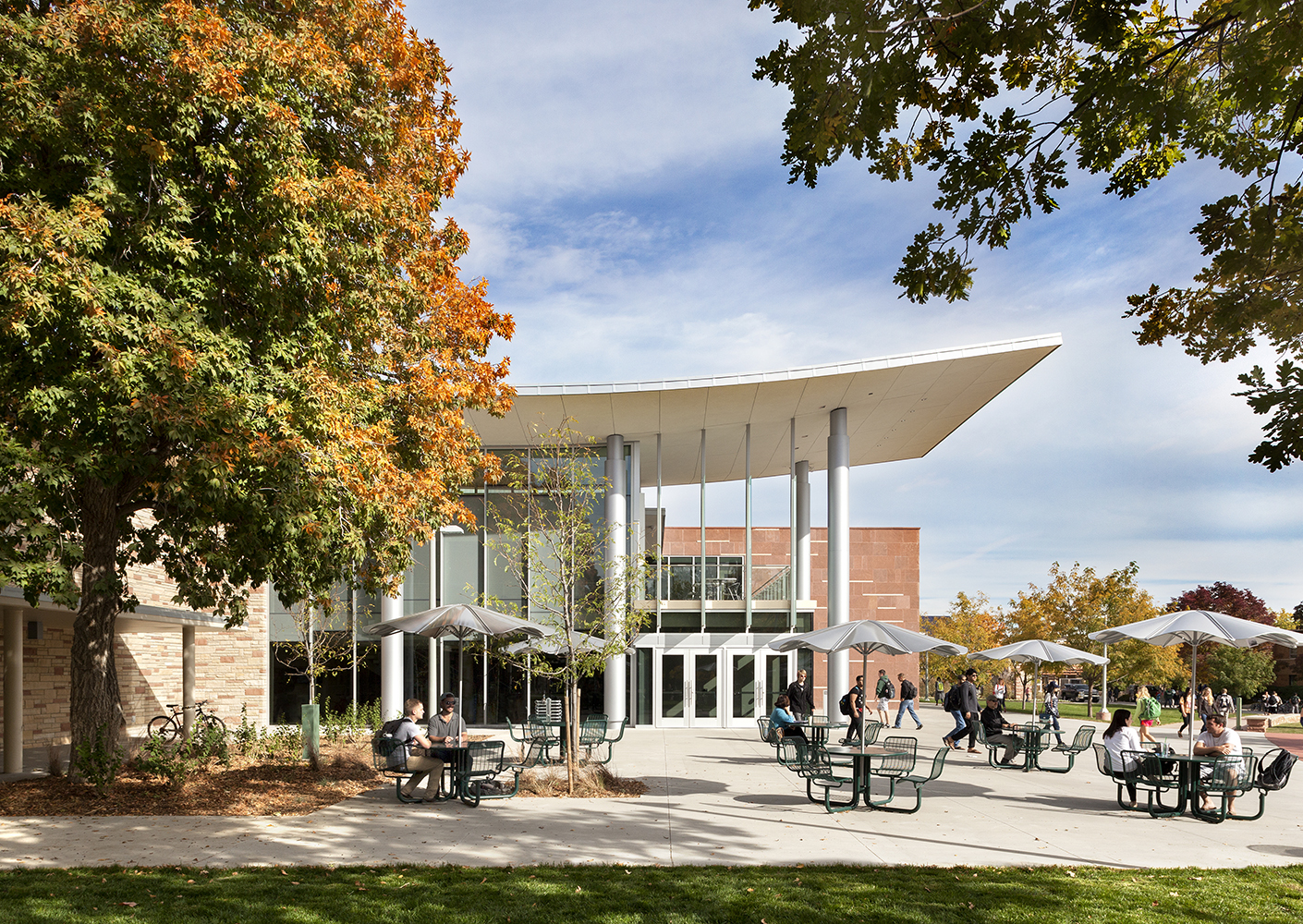Welcoming the Future: Adaptive Reuse for Mid-Century Urban and University Cores



With sustainability long at the core of our firm’s DNA, we’ve made great strides to meet carbon neutral challenges, and always incorporate more sustainable design and construction practices. But even green building rating systems and certifications can’t fully offset the carbon footprint of a new construction project. In 2016, new construction was responsible for generating 1 billion metric tons of carbon dioxide. The best option? Use what’s already standing and embrace adaptive reuse: a practice where we give new life to an old building, without the environmental drawbacks of demolition and new construction.
Post-war architecture in American downtowns, as well as on university campuses, was heavily inspired by the clean lines of European modernism championed by figures like Le Corbusier and Mies van der Rohe. But, their rigid designs and thin glass façades did not always age well: As tastes in both aesthetics and working environments shifted over the decades, many of these period buildings fell into disuse, and now face demolition because they struggle to meet modern energy codes. By retrofitting these structures with new systems, we can seize the opportunity to transform them into new spaces for innovation and collaboration.
Here’s why:
Urban downtowns like the Chicago Loop and Minneapolis are, in many ways, leading the trend toward adaptive reuse due largely to their abundance of existing office building stock. They’re full of companies that have turned up their noses at the corner-office model of the Mad Men era: Today, innovators are ditching wood paneling for a more dynamic, inclusive, workplace. And they’re doing it without incurring the environmental and financial costs of rebuilding massive office towers or suburban campuses.
Here are two examples:
Here, we took a concrete 1969 Harris Bank office and opened it up to a shared vision of productivity and wellness. The original materials used were of high quality and built to last—the dynamic duo of reinforced concrete and steel— allowing our team to integrate sustainable amenities bike storage, lounge and bar spaces, a fitness center and even a bowling alley without worrying about failing structural systems or inadequate services. The biggest challenge was the creative re-framing of the concrete grid, including both interior layout and façade. By implementing new, double-height windows and transparent dividing walls, the collaborative workspaces and social areas within the building became amenities open to all building tenants, both physically and visually.


Here, we didn’t just reuse the building—previously an underused mall courtyard—but we also sourced reused material for décor and structure. Noted for its significant use of repurposed ash trees, the signature wooden ceilings of the new courtyard annex are all reclaimed, avoiding the cutting down of forests and preventing the scrap wood from entering a landfill. By envisioning this modern, mixed-use office for both a private client and as a public connection to the Minneapolis Skyway, we created a new connection to the street, and a place to gather, guilt-free.
While the possibilities for adaptive reuse are endless, one particularly promising building type can be found on American college campuses.
Universities grew rapidly in the U.S. following WWII, as thousands seized higher education opportunities offered by the GI Bill. Fresh on the heels of the Modernist movement, college campuses were some of the first to embrace the new wave of modern architecture, with its new materials, sleek lines, and functionalist philosophy. Of course, universities are always at the forefront of new ideas and technologies, and university enrollment has grown considerably in the last half-century. In 1950, universities enrolled 14.3 percent of the college-aged population; by 2018, they enrolled over 40 percent. Needless to say, many institutions have outgrown their mid-century modern buildings—making them perfect candidates for adaptive reuse.
Here’s an example:
Our team respected the clean simplicity of the Lory Student Center and its pointed elements. While the university had outgrown the relatively small footprint of the center, we retained its original ideas , and added additions in the taste of the original Lory to seamlessly accommodate more students and activities without detracting from the original design intent. The result is a building true to its roots, but adaptive to new uses.
By focusing on reuse and reimagination, we are not only preserving the legacy of great historic design, but also ensuring a greener future for the designers of tomorrow. Adaptive reuse means taking a creative approach to a problem, allowing our designers to deliver state-of-the-art spaces for our clients without the environmental costs of demolition and new construction.
